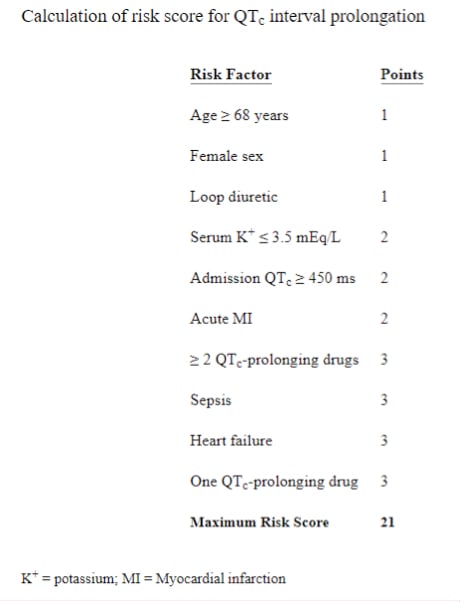
Hydroxychloroquine causes prolonged QT intervals and cardiac arrhythmias, so this needs to be considered in patients being treated with this drug for COVID-19.
It has been more than three months since the word coronavirus was uttered on everyone’s lips and all over the social media, but over the last month the focus has moved from fear to hope in the form of treatment for novel coronavirus (also referred to as COVID-19 and SARS-CoV-2).However, the drug therapy brings with it a set of negative side effects.
Hydroxychloroquine and chloroquine are the new “medical miracles” being lauded by letters to the editor and anecdotal in-vitro/vivo studies.[1,2,3] A recent open-label study by Gautret et al. showed significant reduction in viral “carriage” in patients receiving hydroxychloroquine and azithromycin.[4] This led to the off-label recommendation to use hydroxychloroquine for COVID-19.[5,6] Hydroxychloroquine is used to prevent or treat malaria infections caused by mosquitos and to treat auto-immune diseases such as lupus and rheumatoid arthritis when other medications have not worked or cannot be used.[6]
It may take months to know the true outcomes from larger trials,[4,5] but what we do know is the safety profiles of these medications. Both hydroxychloroquine and chloroquine have been U.S. Food and Drug Administration (FDA) approved for lupus erythematosus, rheumatoid arthritis, and malaria.[6] Years of safety data show that these medications can cause cardiac ECG QT prolongation and subsequent arrhythmias, including torsade de pointes.[9] These medications can prolong the QT correction (QTc), even when taken as recommended.[9] With limited treatment options how can providers proceed with treatment options?
QT Prolongation Assessment and Monitoring With Hydroxychloroquine and Chloroquine
The QT interval in electrocardiograms (ECG) is the time from the beginning of the QRS complex, representing ventricular depolarization, to the end of the T wave, resulting from ventricular repolarization.[8]
In general, the normal QT interval is below 400 to 440 milliseconds (ms), or 0.4 to 0.44 seconds. Women can have a longer QT interval than men. Due to the effects of heart rate, the corrected QT interval (QTc) is frequently used.
Due to the effects of heart rate, the term "corrected QT interval" (QTc) is frequently used. The QTc is considered prolonged if greater than 450 ms in males and 470 ms in females.[8]
According to Tisdale et al. (2013), there are risk factors associated with QTc prolongation. They have been developed into a risk score tool (Figure 1) that takes age, sex, diuretic use, potassium level, baseline QTc, acute myocardial infarction, use of QTc prolonging drugs, sepsis and heart failure into account.[7]
For those considering hydroxychloroquine and chloroquine for COVID-19 infected patients, consider the following modifiable options [9]:
• ECG with QTc evaluation
• Avoidance of non-essential QT-prolonging medications
• Identifying and correcting electrolyte imbalances (potassium, magnesium, calcium)
• Discontinuing non-essential QTc-prolonging medications In addition, consider co-morbidities that may increase therapeutic levels such as acute kidney injury or liver disease.
Lastly, adopt a relevant resource for interpretation and drug interactions. Credible Meds provides in-depth review of QTc prolonging medications and is free.[9] Although we do not have many tools in the COVID-19 treatment arsenal, we can arm ourselves with the knowledge of how to assess patients for QTc prolongation.

FIGURE 1 — According to Tisdale et al. (2013), those with low risk scores (<7) had a 15% incidence for QTc prolongation. Those with moderate (7-10) or high (>11) risk scores incidence of QTc prolongation was 37% and 73%, respectively (Tisdale et al., 2013).
Editor’s note: Marianne Pop, Pharm.D., BCPS, is a clinical pharmacist and clinical assistant professor with the regional pharmacy program, University of Illinois at Chicago College of Pharmacy. She specializes in emergency medicine pharmacy as part of the regional pharmacy program at OSF Saint Anthony Medical Center in Rockford, Ill.
Related Hydroxychloroquine Content:
VIDEO: Why QT-prolongation Occurs in COVID-19 Patients on Hydroxychloroquine — Interview with Andrew Krahn, M.D.
VIDEO: Overview of Hydroxychloroquine and FDA Warning in its use to Treat COVID-19 — Interveiew with Marianne Pop, Pharm.D.
FDA Grants Emergency Use Authorization to VitalConnect for Cardiac Monitoring in COVID-19 Patients
FDA Reports of Deaths and Injuries From Use of Antimalarial hydroxychloroquine in COVID-19 Patients
VIDEO: Cardiologists Manage Trial Testing if Hydroxychloroquine Protects Clinicians From COVID-19
First Large-scale U.S. Study on Hydroxychloroquine COVID-19 Prophylaxis Begins in Detroit
ESC Council on Hypertension Says ACE-I and ARBs Do Not Increase COVID-19 Mortality.
5. Kupferschmidt K., Cohen J. WHO launches global megatrial of the four most promising coronavirus treatments. Science. March 22, 2020. Accessed March 23, 2020 https://www.sciencemag.org/news/2020/03/who-launches-global-megatrial-four-most-promising-coronavirus-treatments.


 November 12, 2025
November 12, 2025 









